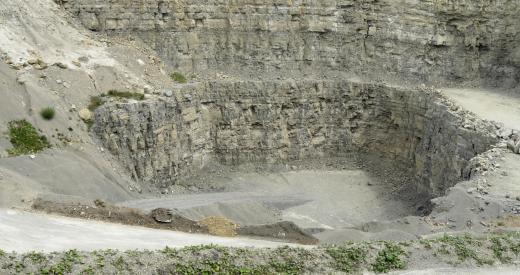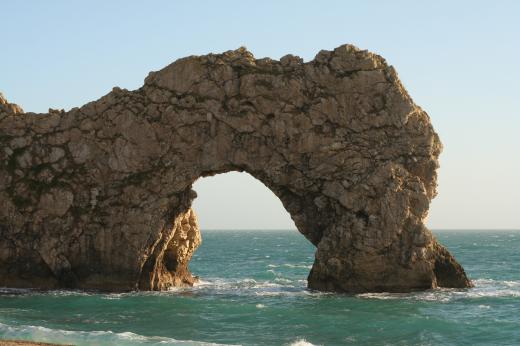Limestone is a type of sedimentary rock found in deposits all over the world and used in an assortment of ways. This rock is one of the most common forms of sedimentary rock, with an estimated 10% of sedimentary rock worldwide being composed of limestone. There are a number of different forms of this rock which come in an array of textures, colors, and appearances, and many people interact with products made from limestone on a daily basis.
Like other sedimentary rocks, limestone is formed by the slow deposition of sediments, and their subsequent compression. The bulk of the world's deposits are marine in origin, consisting primarily of the remains of plants and animals, including reefs, which were gradually deposited on the ocean floor and later compressed due to geological activity and the weight of subsequent layers of debris and the ocean itself. Limestone can also form very slowly through a process of leaching through mineral fields and deposition, as in the case of stalactites and other cave formations.

The key mineral present in limestone is calcium carbonate, but the rock is often mixed with other mineral impurities. These impurities can dramatically alter the texture of the rock, along with its color. As an example of the diversity of limestone, both chalk and marble are forms of limestone, even though these two rock varieties look and feel very different. In the case of chalk, the rock is soft, typically white, and crumbly, while marble is hard, with crystalline grains and an array of colors which commonly includes large seams of color.

Some limestones are composed of small grains of material which have been compressed, while others have crystalline structures upon magnification. These variations are influenced by the stone's formative processes, as is the color, which can be white, yellow, green, pink, cream, black, rust, brown, or any other color imaginable, depending on impurities. Seepage through deposits over the course of centuries can also cause color variations.

In addition to chalk and marble, some other well known varieties of this stone include marl, dolomite, and oolite. Limestone has historically been used in construction, as many varieties make excellent building materials. It is also used in the manufacture of cement and animal feed, and it may be involved in the preparation of printing plates and other industrial processes. Limestone is also of interest to paleontologists, because it often includes excellent examples of fossilized organisms which can be studied to learn more about the geologic record and the history of life on Earth.
Ever since she began contributing to the site several years ago, Mary has embraced the exciting challenge of being a About Mechanics researcher and writer. Mary has a liberal arts degree from Goddard College and spends her free time reading, cooking, and exploring the great outdoors.

